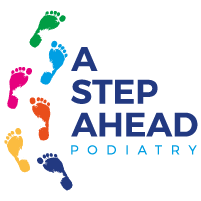What is Athlete’s Foot?
Tinea pedis (aka athlete’s foot) is a skin infection that affects about 15% of the population and is caused by a build-up of fungal microorganisms on the skin.
Athlete’s foot is commonly found between the toes and on the soles of the feet. Sometimes the skin will appear cracked or small blisters can form on the skin. Patients will often describe an itching and burning sensation which can be extremely uncomfortable and frustrating.
It is important to treat athlete’s foot quickly as small breaks in the skin can develop, which may lead to secondary infections and be painful. Also, athlete’s foot can spread to the surrounding areas, such as your nails, causing them to become thick and discoloured. If this happens, it can take several months or years to treat.
What causes Athlete’s Foot?
Anyone can get athlete’s foot, but those who sweat a lot or workout often are more likely to develop this condition due to the prolonged excess moisture on the skin.
Our bodies are covered in a layer of microorganisms, mainly bacteria and fungus, which can protect the body. This is known as our skin flora. The skin flora exists to offer an additional layer of protection for our bodies which alerts the immune system when abnormalities are detected. Normally these organisms live in harmony, however, the fungus microorganisms can be opportunistic and want to dominate the skin flora. Fungus thrives in warm, dark, moist environments and can quickly multiply – causing athlete’s foot. Our shoes provide the perfect environment for fungus to grow.
Athlete’s foot can also spread from person to person via direct contact with the infected area or from standing/walking on infected tissues. Places like gyms and changing facilities can be areas where it can be transmitted easily as many individuals are walking bare foot and the warm, moist environments are perfect breeding grounds for fungus.
How Do I Stop Athlete’s Foot From Developing?
- Wash your feet regularly and make sure you dry them thoroughly, paying close attention to your toes and the spaces in between them. Ensure they are completely dry before putting your socks on!
- If you have sweaty feet, I would suggest cleaning your feet and changing your socks/tights more than once a day. If not, once a day should be sufficient.
Tip – alcohol hand gel is great for drying out the skin and dealing with unwanted moisture. - When in public places, such as changing facilities in the gym, always wear something on your feet – especially if you’re in a facility with water on the floor.
- Don’t share towels, socks or shoes with anyone without them being cleaned properly. Towels and socks should be washed at 60°c to kill off any infections that could be harbouring.
- Your shoes require 24 hours to fully dry out and reduce any bacterial or fungal load. This means the shoes you wear on Monday shouldn’t be worn again until Wednesday, especially gym shoes.
- If you are prone to fungal infections, you should use a fungal prevention treatment in your shoes regularly to prevent any build-ups.
What treatments are there for Athlete’s Foot?
There are many anti-fungal medications you can purchase over-the-counter in your local pharmacy which is a good starting point. These come in several forms such as creams, sprays or powders and can take up to a few weeks to take effect.
It is super important to continue with a good hygiene routine and the preventive measures listed above while carrying out treatment. We often use the treatments on our feet but forget about our shoes and normal foot care routine, and the infection reoccurs.
Tip – always wash your hands before and after treatment to prevent cross infection to other areas of the body.
How Can A Step Ahead Podiatry Help?
Visiting a podiatrist is advisable, especially with persistent athlete’s foot. They will be able to suggest a treatment plan best suited to you and the type of athlete’s foot you have, and can help prevent the infection spreading into the nails and other areas of the body.
If you think that you may need help with this, please get in touch or book an appointment if you’re feeling comfortable.

